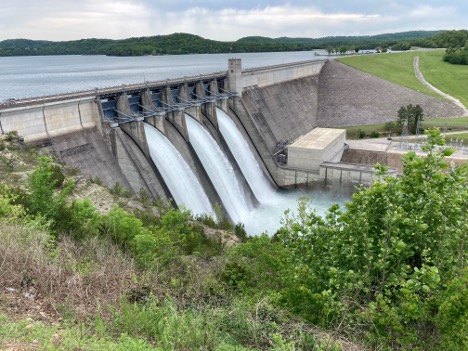Drinking Water
Contact
University of Arkansas System Division of Agriculture
Cooperative Extension Service
2301 S. University Ave.
Little Rock, AR 72204

Drinking Water
Water is essential for life so when looking for a place to build, it is the first consideration. Cities were always located near a dependable water supply, but it was not unusual for the growth of the city to outpace the supply of water. Since ancient times mankind has been diverting water to dry places to support the growth of ever-larger cities. But instead of considering water management for massive cities, let’s consider water resource management for rural residents.
The perfect home site for rural residents has always been a location with year-round water. Places with live springs or year-round streams were the first to be settled, even though they might not have the best farmland. But over the last two centuries, things have changed. The water table has dropped, the forest of today is a thick, impenetrable thicket and once-dependable water sources are failing. The late summer drought of 2024 has resulted in a steady stream of pickups and trailers hauling water tanks to the few scattered water fill stations in the area.
The amount of water you need depends on your lifestyle. The average person in a city uses 50 to 75 gallons of water per day. This seems hard to believe because in my camper van, I get by on less than two gallons a day. But that is only for drinking water, washing my face in the morning and brewing a pot of coffee. Unless I lam using a pit toilet at a campground, I need to add to that total every toilet flush, shower or load of laundry. Water use adds up quickly.
Early Ozark homesteads often relied on hand-dug wells for their water. I’ve peered down into several of these and most I have seen are 15 to 25 feet deep, though I’ve heard of some being as deep as 75 feet. Today, water only accumulates in these shallow wells during the rainy spring months, but presumably at one time, the water table was high enough to provide year-round water. Water use was more modest in the homestead era. Everyone shared the same bath water and baths happened only once a week. The tub water was then used to water the vegetables. A water bucket sat on a table and we all drank from the same dipper. The toilet didn’t flush, so no need for water there.
On the farm, livestock also needs water. Pond water is the standby for livestock but in drought years ponds often dry up. I’ve been watching one farmer haul water to his cows because the pond is now nothing but a mud pit. Chicken houses and hog farms require better water and are often supplied by wells. Irrigating vegetable gardens is usually something only those blessed with good pond water or a nearby stream can accomplish.
Live springs and active seeps have been dependable water supplies for residents in rural areas, but they have become less reliable as the water table has dropped and the forests have filled in, sucking all shallow water out of the soil profile. And, most springs rely on shallow surface water, increasing the chance of contamination from nasty things that happen in the watershed area of the spring.
Water catchment from roofs is coming back in vogue. Every Master Gardener has surely been to at least one rain barrel class and is using the collected water in their garden. I grew up in a house with a roof-fed cistern but we preferred the well water for drinking. It was cold and it just tasted better. But cooking, bathing and laundry was mostly done with cistern water because it was plumbed into the house.
During the 20 years following the end of World War II, our nation went through a phase I think of as the “Bucky beaver” period. The Army Corps of Engineers were in a dam-building frenzy and most of the lakes we now rely on for drinking water and power generation were built during those years. With lots of stored water and environmental legislation passed during the 1970s, many people started taking water for granted.
Initially, the government’s efforts at providing safe water for people were primarily focused on major metropolitan areas until 1974 when the Safe Drinking Water Act enabled the Environmental Protection Agency to set national standards for safe drinking water. The National Rural Water Association was founded in 1976 as a non-profit group to support small rural communities as they followed the guidelines. Arkansas joined the association in 1977.
The Arkansas Rural Water Association is set up to work with communities of less than 10,000 people by providing training and certification programs for system operators. Getting water into rural areas relies on member-supported “water authorities” that are under the umbrella of the Agriculture and Natural Resources division. These associations form and seek zero-interest loans to extend water into the countryside. Arrival of rural water into an area is almost always a cause for celebration, because water is a necessity, not a luxury.
